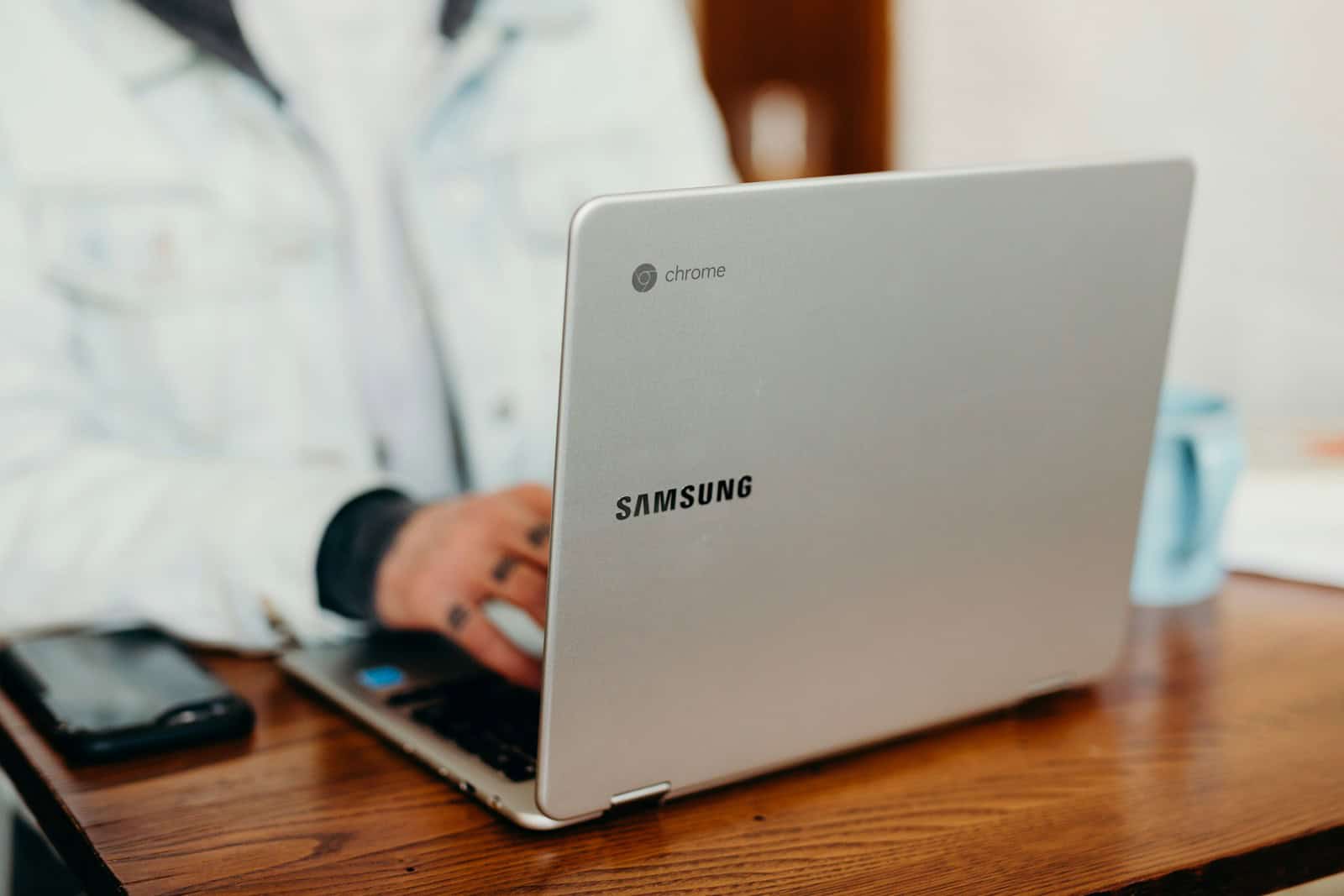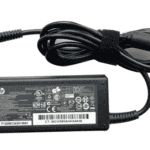Setting up a new Chromebook doesn’t have to be complicated. The process takes just a few minutes and requires only basic information like your Google account details and WiFi password. Once you turn on your Chromebook, the device guides you through a simple step-by-step setup that gets you up and running quickly, so you can start browsing the web and using apps in no time.
Many people enjoy how straightforward Chromebook setup is compared to other laptops. You’ll be prompted to connect to WiFi, sign in with your Google account, and choose a few basic preferences. If you have an Android phone, you can even use the Quick Setup feature to transfer some settings automatically from your phone to your new Chromebook.
Chrome OS is designed to be user-friendly, making it perfect for students, casual users, or anyone who wants a simple computing experience. Your Chromebook will automatically check for and install any system updates during setup, ensuring you start with the latest features and security patches.
How To Set Up a New Chromebook (Step-by-Step)
Setting up a new Chromebook is quick and easy—designed for speed, simplicity, and seamless syncing with your Google account. Here’s how to get started:
🔌 Step 1: Unbox and Power On
- Take your Chromebook out of the box.
- Plug it into a power source using the charger that came with it.
- Open the lid—it should automatically power on. If not, press the Power button.
🌐 Step 2: Connect to Wi-Fi
- You’ll be prompted to connect to a Wi-Fi network.
- Select your Wi-Fi name and enter the password.
- Once connected, your Chromebook will check for updates. Let it finish before moving on.
👤 Step 3: Sign in With Your Google Account
- Use your Google email and password to sign in.
- Don’t have a Google account? Click “More Options” → “Create Account” to set one up.
- You can also log in as a Guest, but features will be limited.
🔄 Step 4: Sync and Set Preferences
- If you’ve used a Chromebook before, you’ll have the option to sync settings, bookmarks, extensions, and apps from your old device.
- You can choose to enable Google Assistant during this step.
- Customize your device name, keyboard layout, and privacy settings.
🧰 Step 5: Set Up Google Play (Optional)
- Most newer Chromebooks support Android apps.
- You’ll be prompted to Enable Google Play Store—this lets you download apps like Instagram, Netflix, Zoom, or games.
- Agree to the terms to proceed or skip this step if you prefer.
🛡️ Step 6: Update and Secure
- ChromeOS should update automatically, but you can manually check by:
- Clicking the clock > Settings (⚙️) > About ChromeOS > Check for Updates
- Add security options like a PIN or fingerprint if your device supports it.
📁 Step 7: Get Familiar With the Chromebook Interface
- Launcher (bottom-left corner) = App drawer/search bar
- Shelf (bottom bar) = Taskbar where you can pin favorite apps
- Files app = Access local downloads and Google Drive
- Everything button (🔍 or ◉ key) = Search anything on the device or web
🚀 Step 8: Start Using Your Chromebook!
- Install any needed web apps or extensions from the Chrome Web Store.
- Adjust settings via Settings > Device for display, keyboard, touchpad, etc.
- Explore built-in tools like Screen Capture, Google Docs, and Chrome Remote Desktop.
Key Takeaways
- Chromebook setup requires only WiFi access and a Google account to get started.
- The guided process walks you through each step with clear on-screen instructions.
- Chrome OS updates automatically during setup to provide the latest features and security.
Getting to Know Your Chromebook
After setting up your new Chromebook, it’s important to understand its basic features and accessibility options to get the most out of your device.
Chromebook Overview
Chromebooks run on Chrome OS, which is different from Windows or Mac computers. The main screen has a taskbar called the “shelf” at the bottom. This holds your pinned apps, the app launcher button, and status icons.
The keyboard has special keys instead of function keys. Look for the search key (magnifying glass icon) where the Caps Lock would be on other keyboards. You’ll also find browser navigation keys for going back, forward, and refreshing pages.
Chrome OS is built around the Chrome browser. Most of your work happens in browser tabs or web apps. Your files are stored in Google Drive by default, though you also have local storage.
The Settings menu lets you customize your device. Find it by clicking the time in the bottom-right corner, then the gear icon. Here you can adjust display settings, connect to Wi-Fi, and manage your Google account.
Accessibility Features
Chromebooks come with built-in accessibility features to help users with different needs. To access these tools, go to Settings and search for “accessibility” or find the Accessibility section.
For vision support, Chromebooks offer screen magnifiers to zoom in on parts of the screen. ChromeVox is the built-in screen reader that reads text aloud. You can also change text size and enable high contrast mode for better visibility.
Motor skill support includes sticky keys, which let you press key combinations one key at a time. On-screen keyboard gives you the option to type without using the physical keyboard.
For audio needs, Chromebooks provide captioning for videos and mono audio for those with hearing in just one ear. Speech-to-text lets you dictate instead of typing.
These features can be turned on or off as needed, making Chromebooks adaptable to various accessibility requirements.
Setting Up Your Google Account
A Google Account is essential for using your Chromebook. It gives you access to Gmail, Google Drive, and other Google services with a single login.
Creating a Google Account
If you don’t already have a Google Account, you’ll need to create one. Visit accounts.google.com/signup from any device. Enter your first and last name in the appropriate fields.
Choose a username that will become your Gmail address ([email protected]). Pick something memorable but professional. If your first choice is taken, Google will suggest alternatives.
Next, create a strong password. Use a mix of letters, numbers, and symbols. Write it down somewhere safe or use a password manager.
You’ll need to provide some personal information like your phone number and recovery email. These help you recover your account if you get locked out.
Google will ask for your birthday and gender. Once you review and accept Google’s terms of service, your account is ready to use.
Signing in to Your Chromebook
When you first turn on your new Chromebook, you’ll see a welcome screen. Select your language and connect to a Wi-Fi network.
On the sign-in screen, enter your Google Account email address and password. If you have two-factor authentication enabled, complete that step too.
Chromebooks use Single Sign-On (SSO), so logging in once gives you access to all Google services. Your bookmarks, extensions, and settings will sync automatically if you’ve used Chrome before.
If you share your Chromebook with others, each person should add their own Google Account. To add accounts later, go to Settings and look for the “Accounts” section.
Configuring Basic Settings
Once your Chromebook is up and running, you’ll need to adjust some basic settings to make it work for you. These customizations help your device connect properly and feel comfortable to use.
Network Configuration
Setting up your network connection is essential for getting the most from your Chromebook. To connect to Wi-Fi, click on the time area in the bottom-right corner of the screen. This opens the Quick Settings panel.
Select the network icon to see available networks. Choose your network from the list and enter the password if required. Your Chromebook remembers networks you’ve connected to before, making it easy to reconnect later.
For more control over your network settings:
- Go to Settings → Network
- Toggle Airplane mode if needed
- Set up a proxy connection for school or work networks
- Connect to mobile data if your Chromebook supports it
You can also save networks as “Preferred” to connect automatically whenever in range.
Keyboard Customization
Your Chromebook keyboard has special keys that differ from traditional laptops. The top row features function keys for brightness, volume, and navigation instead of standard F1-F12 keys.
- Open Settings
- Go to Device → Keyboard
- Adjust key behavior to match your preferences
You can change the Search/Launcher key function, set keyboard shortcuts, and modify language settings. Many users prefer to remap the Search key to work as Caps Lock since Chromebooks don’t include a dedicated Caps Lock key.
For international users, adding multiple keyboard layouts is simple. Just select “Languages and inputs” in Settings, then add your preferred layouts. Switch between them using Alt+Shift.
Connecting to the Internet
Setting up your Chromebook requires connecting it to the internet. Wi-Fi access is essential for downloading updates, signing into your Google account, and using web apps during setup.
Troubleshooting Wi-Fi Issues
If you see a “Network Not Available” message during setup, don’t worry. This is a common issue with new Chromebooks. First, check that Wi-Fi is turned on by clicking on the time area in the bottom right corner. Make sure the Wi-Fi toggle is blue.
Try moving your Chromebook closer to your router. Walls and other devices can block signals and cause connection problems.
If you’re entering a password, double-check it’s correct. Passwords are case-sensitive and must be exact.
For persistent issues, you can try continuing as a guest user, then pressing Ctrl+Alt+T to open the command prompt. Some users report that typing “autest” can help force network updates.
Still having trouble? Check if other devices can connect to the same network. If they can’t, the problem might be with your router, not your Chromebook.
Installing and Managing Apps
Chromebooks offer two main ways to add applications: the Google Play Store for Android apps and the Chrome Web Store for web-based extensions and programs. Both options provide thousands of apps that can expand your Chromebook’s functionality.
Using the Google Play Store
Most modern Chromebooks support Android apps through the Google Play Store. To access this feature:
- Click on the time in the bottom right corner of your screen
- Select Settings
- Click on Apps
- Select Manage Google Play preferences
Once enabled, you’ll find the Play Store app in your launcher. Opening it works just like on an Android phone – you can search for apps, view recommended options, and install them with a click.
After installing apps, you can manage them in the Settings menu under “Apps.” This area lets you control permissions, clear data, or uninstall programs you no longer need.
Some Android apps work better than others on Chromebooks. Apps designed for phones might look stretched or behave oddly with a keyboard and mouse.
Using the Chrome Web Store
The Chrome Web Store offers extensions, themes, and web applications specifically designed for Chrome OS:
- Open the Chrome browser
- Go to the Chrome Web Store (search for it or visit chrome.google.com/webstore)
- Browse categories or search for specific apps
- Click Add to Chrome for free apps or Buy for paid options
Web apps install quickly and integrate with your Chromebook’s system. Many are “Progressive Web Apps” (PWAs) that look and feel like regular applications but run through the browser.
You can manage Chrome apps and extensions by typing chrome://extensions in your address bar. This panel lets you disable, remove, or adjust permissions for your installed web apps.
The Web Store includes many productivity tools, games, and utilities that work well with Chrome OS’s web-focused design.
Exploring Chrome OS Features
Chrome OS offers unique features that make Chromebooks powerful and easy to use. Let’s look at how to manage your files and use the latest AI tools on your device.
File Management
The Files app on Chrome OS helps you keep your documents organized. You can access it by clicking the launcher icon and then finding the Files app.
Your Chromebook stores files in two main locations:
- Downloads folder: Temporary storage on your device
- Google Drive: Cloud storage that syncs across all your devices
To move files between folders, simply drag and drop them. You can also right-click files for more options like sharing, renaming, or deleting.
Chrome OS makes it easy to work with different file types. Open PDFs, view images, and play videos directly in the Files app. Need to zip files? Right-click and select “Zip selection” to compress them.
Files also connects to external storage like USB drives and SD cards. Just plug them in, and they’ll appear in the left sidebar.
Using AI Features
Chrome OS now includes helpful AI tools that make your Chromebook smarter. These features save time and boost productivity.
Google Assistant is built into newer Chromebooks. Press the Assistant key or say “Hey Google” to:
- Set reminders
- Check the weather
- Control smart home devices
- Search the web
Smart text suggestions appear when typing emails or documents. They predict what you might type next and offer to complete sentences for you.
Screenshot assistance lets you capture, annotate, and share screen images easily. The AI can even recognize text in screenshots, making it searchable.
Chrome OS’s Help app uses AI to answer questions about your device. It provides step-by-step guides for troubleshooting problems and discovering new features.
To enable AI features, check your Settings under “Privacy and security” and make sure “Google services” is turned on.
Optimizing Your Chromebook Experience
Once you’ve set up your new Chromebook, you can take steps to enhance its performance and functionality. Making a few adjustments will help you get the most out of your device for work, school, or personal use.
Integrating with G Suite
G Suite (now Google Workspace) works seamlessly with Chromebooks. Sign in with your Google account to access Gmail, Drive, Docs, Sheets, and Slides automatically. Your files sync across devices, so you can start a document on your phone and finish it on your Chromebook.
Set up offline access to your important Google Docs by enabling offline mode in Drive settings. This lets you work without internet connection.
To manage notifications from G Suite apps, click on the time in the bottom right corner, then select “Do not disturb” when you need focused work time.
Create separate work and personal profiles if you use your Chromebook for both. This keeps your data organized and prevents work emails from interrupting weekend plans.
Productivity and AI Tools
Install Android apps from the Play Store to boost your productivity. Microsoft Office, Notion, and Trello work well on Chromebooks and can complement Google’s offerings.
Many Chromebooks now support AI features that help you work faster. Try Smart Compose in Gmail and Google Docs, which suggests phrases as you type. Look for the “Help me write” feature that can draft emails and documents based on simple prompts.
Use Chrome extensions like Grammarly to improve your writing or LastPass to manage passwords. The Task Manager helps you monitor which apps use the most resources—press Search+Escape to open it.
Adjust your Chromebook’s performance settings for demanding tasks. Some models offer Hyper-Threading to increase performance in apps and games, which you can enable in settings.
Getting Support for Your Chromebook
When you need help with your Chromebook, several support options are available to assist you with common issues, technical problems, or general questions about using your device.
Using JustAnswer for Help
JustAnswer provides expert support for Chromebook users who need professional assistance. This online service connects you with tech specialists who can solve specific problems through chat or video calls.
To use JustAnswer with your Chromebook:
- Visit the JustAnswer website or download their app
- Create an account or sign in
- Select the “Tech” or “Computer” category
- Describe your Chromebook issue clearly
- Connect with an available expert
JustAnswer charges a fee, but it can be worth it for urgent problems or when Google’s free support isn’t enough. Their experts can help with setup issues, software problems, hardware troubleshooting, and more.
For basic questions, check Google’s free Chromebook Help Center first. It contains tutorials, FAQs, and troubleshooting guides that might solve your problem without cost.
Frequently Asked Questions
Setting up a new Chromebook involves several steps from initial power-on to transferring your data. These questions cover the most common setup scenarios users encounter with their devices.
How do I complete the initial setup of my new Chromebook?
Turn on your Chromebook by pressing the power button. The device will guide you through the setup process with on-screen instructions.
Connect to a Wi-Fi network when prompted. You’ll need internet access to complete the setup.
Sign in with your Google Account. If you don’t have one, you can create a new account during setup.
Once signed in, your Chromebook will sync your Google settings, apps, and extensions automatically.
What are the steps to set up a Chromebook for a child’s use?
Create a supervised Google Account for your child if they don’t already have one. You can do this through family.google.com.
During Chromebook setup, enter your child’s Google Account information.
Google’s Family Link will help you manage what your child can access. You can set screen time limits and approve apps.
You can also block certain websites and set filters for appropriate content.
How can I create a new account on my Chromebook?
Sign out of the current account by clicking on your profile picture in the bottom right corner and selecting “Sign out.”
On the sign-in screen, click “Add Person” or “More options” and then “Add person.”
Enter the Google Account email and password for the new user.
If the person doesn’t have a Google Account, select “Create account” and follow the instructions.
Can I use my Chromebook without an internet connection, and how?
Yes, Chromebooks work offline, but with limited functionality. Many Google apps work offline, including Google Docs, Sheets, and Gmail.
To enable offline access, open the app you want to use offline and look for offline settings. For example, in Google Docs, go to Settings and enable offline access.
Some Android apps and games also work without internet. Download them before going offline.
Remember to occasionally connect to the internet to sync your work and update apps.
What is the procedure for signing in to a Chromebook using a phone?
Make sure both your phone and Chromebook are nearby with Bluetooth turned on.
On the Chromebook sign-in screen, look for “Sign in with your phone” option.
On your Android phone, you’ll receive a notification. Tap it and follow the prompts.
Verify your identity using your phone’s screen lock method (PIN, pattern, or fingerprint).
Once verified, your Chromebook will automatically sign in to your Google Account.
How do I transfer my data and settings to a new Chromebook?
Sign in to your new Chromebook with the same Google Account you used on your old device.
Your bookmarks, passwords, and browser settings will sync automatically.
For files stored locally on your old Chromebook, upload them to Google Drive or transfer them using a USB drive.
To move Android apps, you’ll need to download them again from the Google Play Store, but your app data will often sync.
For a complete backup, use Google Takeout to export all your Google data before switching devices.







